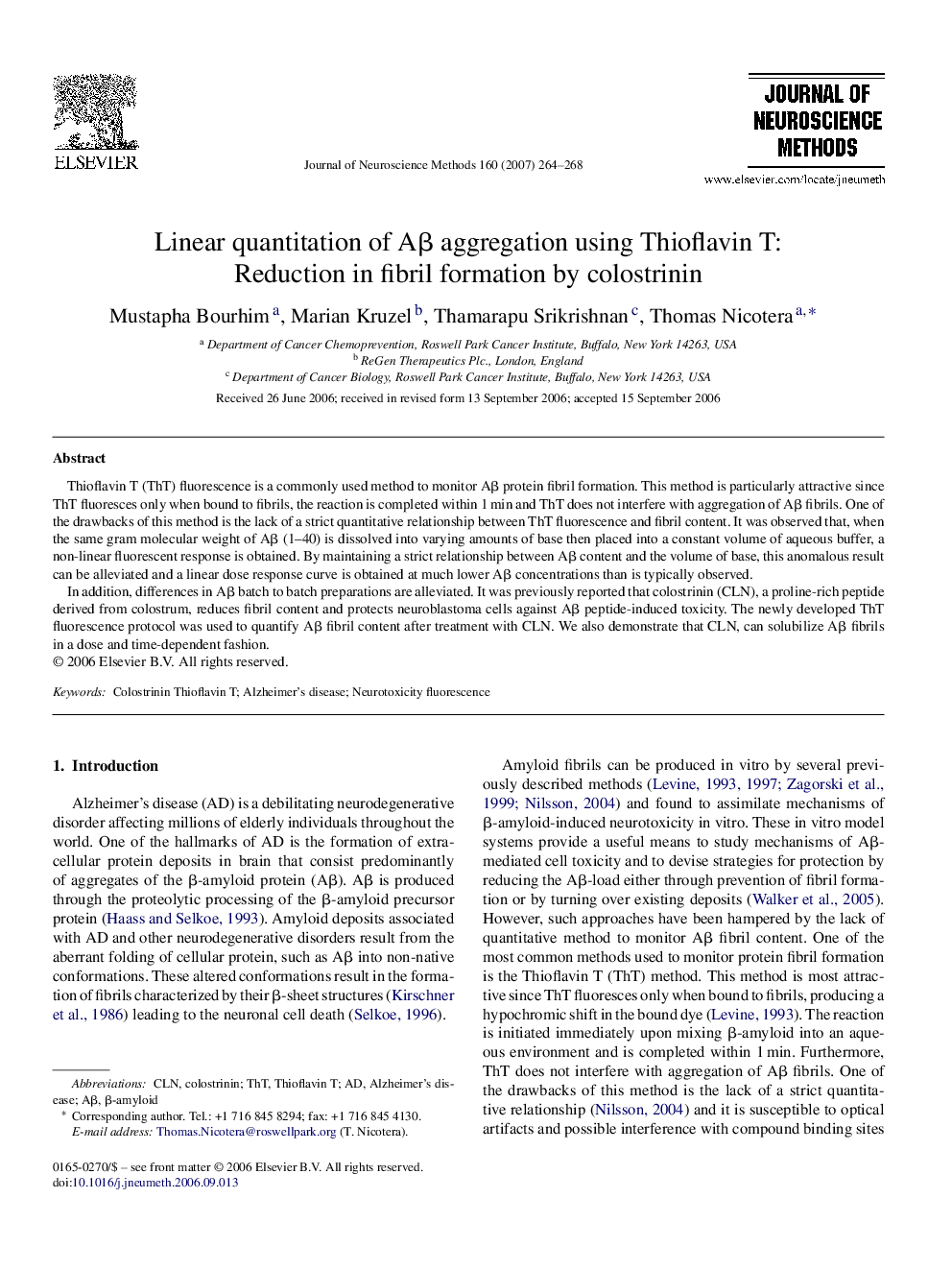| Article ID | Journal | Published Year | Pages | File Type |
|---|---|---|---|---|
| 6270535 | Journal of Neuroscience Methods | 2007 | 5 Pages |
Thioflavin T (ThT) fluorescence is a commonly used method to monitor Aβ protein fibril formation. This method is particularly attractive since ThT fluoresces only when bound to fibrils, the reaction is completed within 1 min and ThT does not interfere with aggregation of Aβ fibrils. One of the drawbacks of this method is the lack of a strict quantitative relationship between ThT fluorescence and fibril content. It was observed that, when the same gram molecular weight of Aβ (1-40) is dissolved into varying amounts of base then placed into a constant volume of aqueous buffer, a non-linear fluorescent response is obtained. By maintaining a strict relationship between Aβ content and the volume of base, this anomalous result can be alleviated and a linear dose response curve is obtained at much lower Aβ concentrations than is typically observed.In addition, differences in Aβ batch to batch preparations are alleviated. It was previously reported that colostrinin (CLN), a proline-rich peptide derived from colostrum, reduces fibril content and protects neuroblastoma cells against Aβ peptide-induced toxicity. The newly developed ThT fluorescence protocol was used to quantify Aβ fibril content after treatment with CLN. We also demonstrate that CLN, can solubilize Aβ fibrils in a dose and time-dependent fashion.
